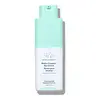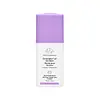What's inside
What's inside
 Key Ingredients
Key Ingredients

 Benefits
Benefits

 Concerns
Concerns

 Ingredients Side-by-side
Ingredients Side-by-side

Water
Skin ConditioningOctyldodecanol
EmollientGlycerin
HumectantBoron Nitride
AbsorbentSaccharomyces/Xylinum/Black Tea Ferment
Skin ConditioningCoconut Alkanes
EmollientCetyl Alcohol
EmollientCetearyl Olivate
Sorbitan Olivate
EmulsifyingNiacinamide
SmoothingCopper Tripeptide-1
Skin ConditioningLeontopodium Alpinum Meristem Cell Culture
Skin ConditioningDipeptide-2
Skin ConditioningPalmitoyl Tripeptide-1
Skin ConditioningPalmitoyl Tetrapeptide-7
Skin ConditioningCopper Lysinate/Prolinate
Skin ConditioningHesperidin Methyl Chalcone
AntioxidantChondrus Crispus
MaskingMangifera Indica Seed Butter
Skin ConditioningGlycine Soja Oil
EmollientHippophae Rhamnoides Oil
EmollientSclerocarya Birrea Seed Oil
HumectantSodium Hyaluronate Crosspolymer
HumectantHydroxyethylcellulose
Emulsion StabilisingCoco-Caprylate/Caprate
EmollientSteareth-20
CleansingLecithin
EmollientPanthenol
Skin ConditioningN-Hydroxysuccinimide
Skin ConditioningUbiquinone
AntioxidantCitric Acid
BufferingThioctic Acid
AntioxidantTocopherol
AntioxidantChrysin
Skin ConditioningSclerotium Gum
Emulsion StabilisingMethylglucoside Phosphate
Skin ConditioningXanthan Gum
EmulsifyingPotassium Sorbate
PreservativeSodium Benzoate
MaskingChlorphenesin
AntimicrobialCaprylyl Glycol
EmollientSodium Hydroxide
BufferingPhenoxyethanol
PreservativePentylene Glycol
Skin ConditioningWater, Octyldodecanol, Glycerin, Boron Nitride, Saccharomyces/Xylinum/Black Tea Ferment, Coconut Alkanes, Cetyl Alcohol, Cetearyl Olivate, Sorbitan Olivate, Niacinamide, Copper Tripeptide-1, Leontopodium Alpinum Meristem Cell Culture, Dipeptide-2, Palmitoyl Tripeptide-1, Palmitoyl Tetrapeptide-7, Copper Lysinate/Prolinate, Hesperidin Methyl Chalcone, Chondrus Crispus, Mangifera Indica Seed Butter, Glycine Soja Oil, Hippophae Rhamnoides Oil, Sclerocarya Birrea Seed Oil, Sodium Hyaluronate Crosspolymer, Hydroxyethylcellulose, Coco-Caprylate/Caprate, Steareth-20, Lecithin, Panthenol, N-Hydroxysuccinimide, Ubiquinone, Citric Acid, Thioctic Acid, Tocopherol, Chrysin, Sclerotium Gum, Methylglucoside Phosphate, Xanthan Gum, Potassium Sorbate, Sodium Benzoate, Chlorphenesin, Caprylyl Glycol, Sodium Hydroxide, Phenoxyethanol, Pentylene Glycol
Water
Skin ConditioningOctyldodecanol
EmollientGlycerin
HumectantSclerocarya Birrea Seed Butter
EmollientLinoleic Acid
CleansingGlyceryl Stearate
EmollientPalmitic Acid
EmollientPentylene Glycol
Skin ConditioningCetearyl Alcohol
EmollientStearic Acid
CleansingSclerocarya Birrea Seed Oil
HumectantPersea Gratissima Oil
Skin ConditioningAvena Sativa Kernel Oil
Skin ConditioningOenothera Biennis Oil
EmollientLinum Usitatissimum Seed Oil
PerfumingSalvia Hispanica Seed Oil
MoisturisingSimmondsia Chinensis Seed Oil
EmollientCeramide AP
Skin ConditioningCeramide NP
Skin ConditioningCeramide EOP
Skin ConditioningAvena Sativa Kernel Extract
AbrasivePanthenol
Skin ConditioningLinolenic Acid
CleansingAdenosine
Skin ConditioningBeta-Glucan
Skin ConditioningQuercetin
AntioxidantAllantoin
Skin ConditioningSodium Lauroyl Lactylate
EmulsifyingPhytosphingosine
Skin ConditioningCholesterol
EmollientXanthan Gum
EmulsifyingTetrasodium Glutamate Diacetate
Propanediol
SolventCitric Acid
BufferingCeteareth-20
CleansingSodium Carbonate
BufferingPhenoxyethanol
PreservativeSodium Chloride
MaskingCaprylyl Glycol
EmollientSodium Hydroxide
BufferingChlorphenesin
AntimicrobialCarbomer
Emulsion StabilisingEthylhexylglycerin
Skin ConditioningWater, Octyldodecanol, Glycerin, Sclerocarya Birrea Seed Butter, Linoleic Acid, Glyceryl Stearate, Palmitic Acid, Pentylene Glycol, Cetearyl Alcohol, Stearic Acid, Sclerocarya Birrea Seed Oil, Persea Gratissima Oil, Avena Sativa Kernel Oil, Oenothera Biennis Oil, Linum Usitatissimum Seed Oil, Salvia Hispanica Seed Oil, Simmondsia Chinensis Seed Oil, Ceramide AP, Ceramide NP, Ceramide EOP, Avena Sativa Kernel Extract, Panthenol, Linolenic Acid, Adenosine, Beta-Glucan, Quercetin, Allantoin, Sodium Lauroyl Lactylate, Phytosphingosine, Cholesterol, Xanthan Gum, Tetrasodium Glutamate Diacetate, Propanediol, Citric Acid, Ceteareth-20, Sodium Carbonate, Phenoxyethanol, Sodium Chloride, Caprylyl Glycol, Sodium Hydroxide, Chlorphenesin, Carbomer, Ethylhexylglycerin
 Reviews
Reviews

Alternatives
Ingredients Explained
These ingredients are found in both products.
Ingredients higher up in an ingredient list are typically present in a larger amount.
Caprylyl Glycol is a humectant and emollient, meaning it attracts and preserves moisture.
It is a common ingredient in many products, especially those designed to hydrate skin. The primary benefits are retaining moisture, skin softening, and promoting a healthy skin barrier.
Though Caprylyl Glycol is an alcohol derived from fatty acids, it is not the kind that can dry out skin.
This ingredient is also used as a preservative to extend the life of products. It has slight antimicrobial properties.
Learn more about Caprylyl GlycolChlorphenesin is a synthetic preservative. It helps protect a product against bacteria in order to extend shelf life. In most cases, Chlorphenesin is paired with other preservatives such as phenoxyethanol and caprylyl glycol.
Chlorphenesin is a biocide. This means it is able to help fight the microorganisms on our skin. It is also able to fight odor-releasing bacteria.
Chlorphenesin is soluble in both water and glycerin.
Studies show Chlorphenesin is easily absorbed by our skin. You should speak with a skincare professional if you have concerns about using Chlorphenesin.
Learn more about ChlorphenesinCitric Acid is an alpha hydroxy acid (AHA) naturally found in citrus fruits like oranges, lemons, and limes.
Like other AHAs, citric acid can exfoliate skin by breaking down the bonds that hold dead skin cells together. This helps reveal smoother and brighter skin underneath.
However, this exfoliating effect only happens at high concentrations (20%) which can be hard to find in cosmetic products.
Due to this, citric acid is usually included in small amounts as a pH adjuster. This helps keep products slightly more acidic and compatible with skin's natural pH.
In skincare formulas, citric acid can:
While it can provide some skin benefits, research shows lactic acid and glycolic acid are generally more effective and less irritating exfoliants.
Most citric acid used in skincare today is made by fermenting sugars (usually from molasses). This synthetic version is identical to the natural citrus form but easier to stabilize and use in formulations.
Read more about some other popular AHA's here:
Learn more about Citric AcidGlycerin is already naturally found in your skin. It helps moisturize and protect your skin.
A study from 2016 found glycerin to be more effective as a humectant than AHAs and hyaluronic acid.
As a humectant, it helps the skin stay hydrated by pulling moisture to your skin. The low molecular weight of glycerin allows it to pull moisture into the deeper layers of your skin.
Hydrated skin improves your skin barrier; Your skin barrier helps protect against irritants and bacteria.
Glycerin has also been found to have antimicrobial and antiviral properties. Due to these properties, glycerin is often used in wound and burn treatments.
In cosmetics, glycerin is usually derived from plants such as soybean or palm. However, it can also be sourced from animals, such as tallow or animal fat.
This ingredient is organic, colorless, odorless, and non-toxic.
Glycerin is the name for this ingredient in American English. British English uses Glycerol/Glycerine.
Learn more about GlycerinOctyldodecanol is a fatty alcohol. It is primarily used to enhance the texture of products.
As an emulsifier, Octyldodecanol helps prevent the oils and waters from separating. It also prevents ingredients from creating foam when shaken.
Octyldodecanol is created by reducing fatty acid to an alcohol.
Due to its high molecular weight, it does not get absorbed into the skin.
Learn more about OctyldodecanolPanthenol is a common ingredient that helps hydrate and soothe the skin. It is found naturally in our skin and hair.
There are two forms of panthenol: D and L.
D-panthenol is also known as dexpanthenol. Most cosmetics use dexpanthenol or a mixture of D and L-panthenol.
Panthenol is famous due to its ability to go deeper into the skin's layers. Using this ingredient has numerous pros (and no cons):
Like hyaluronic acid, panthenol is a humectant. Humectants are able to bind and hold large amounts of water to keep skin hydrated.
This ingredient works well for wound healing. It works by increasing tissue in the wound and helps close open wounds.
Once oxidized, panthenol converts to pantothenic acid. Panthothenic acid is found in all living cells.
This ingredient is also referred to as pro-vitamin B5.
Learn more about PanthenolPentylene glycol is typically used within a product to thicken it. It also adds a smooth, soft, and moisturizing feel to the product. It is naturally found in plants such as sugar beets.
The hydrophilic trait of Pentylene Glycol makes it a humectant. As a humectant, Pentylene Glycol helps draw moisture from the air to your skin. This can help keep your skin hydrated.
This property also makes Pentylene Glycol a great texture enhancer. It can also help thicken or stabilize a product.
Pentylene Glycol also acts as a mild preservative and helps to keep a product microbe-free.
Some people may experience mild eye and skin irritation from Pentylene Glycol. We always recommend speaking with a professional about using this ingredient in your routine.
Pentylene Glycol has a low molecular weight and is part of the 1,2-glycol family.
Learn more about Pentylene GlycolPhenoxyethanol is a preservative that has germicide, antimicrobial, and aromatic properties. Studies show that phenoxyethanol can prevent microbial growth. By itself, it has a scent that is similar to that of a rose.
It's often used in formulations along with Caprylyl Glycol to preserve the shelf life of products.
Sclerocarya Birrea Seed Oil is the oil expressed from the seeds of the Marula plant. In South Africa, Marula is called "an elephant's favorite treat".
Marula seed oil is a non-fragrant oil. It is rich in fatty acids, such as oleic, linoleic, palmitic, stearic, and more. These fatty acids help hydrate the skin.
Other components of marula seed oil include vitamin E and antioxidants such as flavonoids.
Due to the fatty acid content, this ingredient may not be fungal-acne safe.
Learn more about Sclerocarya Birrea Seed OilSodium Hydroxide is also known as lye or caustic soda. It is used to adjust the pH of products; many ingredients require a specific pH to be effective.
In small amounts, sodium hydroxide is considered safe to use. However, large amounts may cause chemical burns due to its high alkaline.
Your skin has a natural pH and acid mantle. This acid mantle helps prevent harmful bacteria from breaking through. The acid mantle also helps keep your skin hydrated.
"Alkaline" refers to a high pH level. A low pH level would be considered acidic.
Learn more about Sodium HydroxideWater. It's the most common cosmetic ingredient of all. You'll usually see it at the top of ingredient lists, meaning that it makes up the largest part of the product.
So why is it so popular? Water most often acts as a solvent - this means that it helps dissolve other ingredients into the formulation.
You'll also recognize water as that liquid we all need to stay alive. If you see this, drink a glass of water. Stay hydrated!
Learn more about WaterXanthan gum is used as a stabilizer and thickener within cosmetic products. It helps give products a sticky, thick feeling - preventing them from being too runny.
On the technical side of things, xanthan gum is a polysaccharide - a combination consisting of multiple sugar molecules bonded together.
Xanthan gum is a pretty common and great ingredient. It is a natural, non-toxic, non-irritating ingredient that is also commonly used in food products.
Learn more about Xanthan Gum